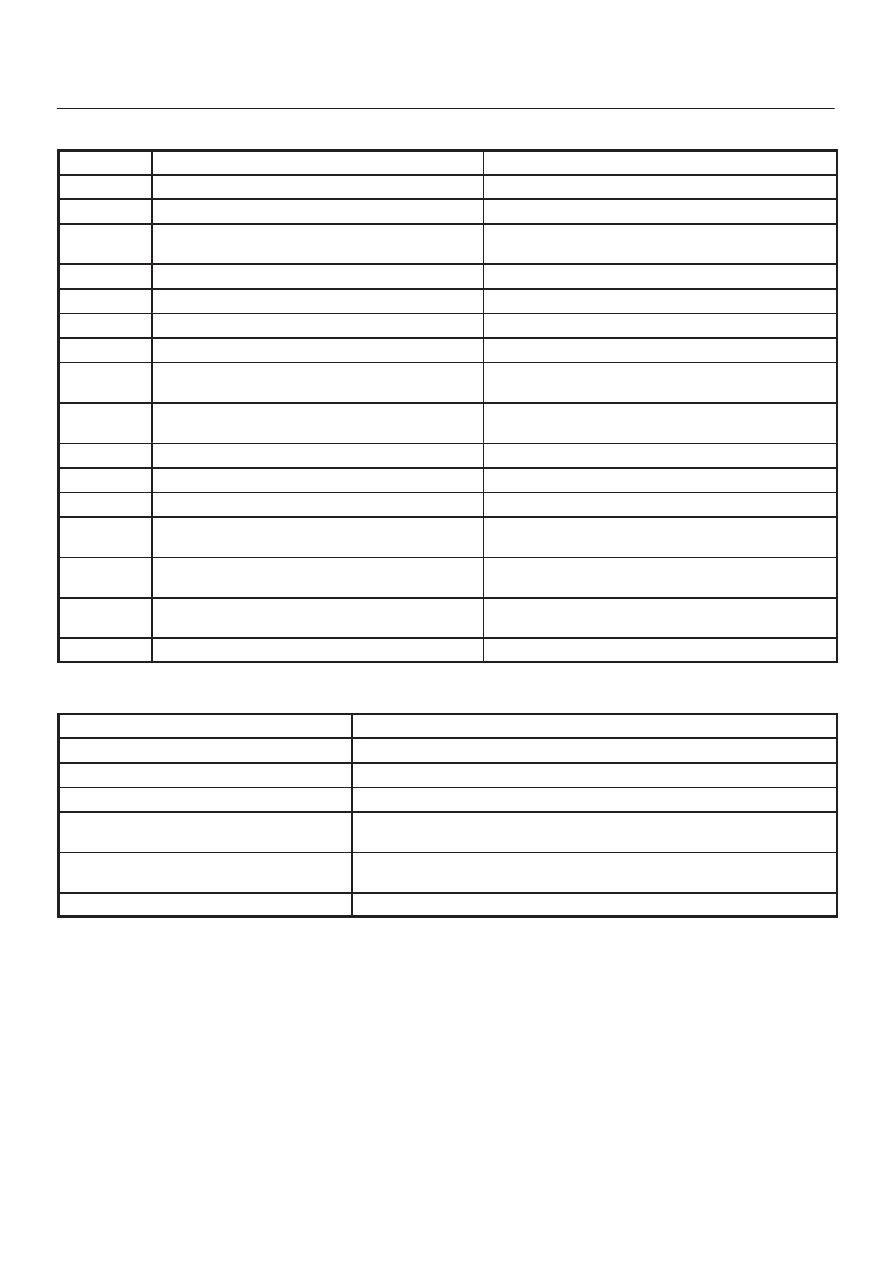Content .. 1236 1237 1238 1239 ..
Isuzu Amigo / Axiom / Trooper / Rodeo / VehiCross. Manual - part 1238

6E1–28
RODEO Y22SE 2.2L ENGINE DRIVEABILITY AND EMISSION
Engine Component Locator Table
Number
Name
Location
1
Engine Coolant Temperature (ECT) Sensor
Rear of engine, near ignition coils
2
Linear Exhaust Gas Recirculation (EGR) Valve
On the left rear of the engine at the bulkhead
3
Heated Oxygen Sensor (HO2S), Bank 1,
Sensor 1
On the exhaust pipe, left side of engine,
immediately behind the exhaust manifold
4
Air Cleaner
Left front of the engine bay
5
Intake Air Temperature (IAT) Sensor
On the intake air duct near the air cleaner
6
Camshaft Position (CMP) Sensor
Inside the front cover assembly
7
Positive Crankcase Ventilation (PCV) Port
On the right front corner of the valve cover
8
Fuel Pressure Regulator
On the forward end of the fuel rail, to the right of
the PVC port
9
Throttle Body
Between the intake air duct and the intake
manifold
10
Fuse/Relay Box
Along the inside of the right fender
11
Throttle Position (TP) Sensor
On the front of the throttle body
12
Idle Air Control (IAC) Valve
On the rear of the throttle body
13
EVAP Canister Vent Solenoid
At the right rear of the engine, behind the Throttle
body
14
Ignition Control Module (ICM)
Mounted on a heat sink on the lower right side of
the engine block, above the starter motor
15
Manifold Absolute Pressure (MAP) Sensor
Bolted to the front edge of the intake manifold,
under the fuel rail
16
Knock Sensor
Left side engine block.
Undercarriage Component Locator Table
Name
Location
Fuel Pump Assembly
Installed in the top of the fuel tank
EVAP Canister
Behind rear axle, near fuel tank filler nozzle
EVAP Canister Purge Valve Solenoid
Behind rear axle, near fuel tank filler nozzle
Heated Oxygen Sensor (HO2S) Bank 1,
Sensor 2
Threaded into the exhaust pipe behind the catalytic converter
Vehicle Speed Sensor (VSS)
Protrudes from the right side of the transmission housing, near the
output shaft
Crankshaft Position (CKP) Sensor
Lower left hand front of engine, behind power steering pump bracket